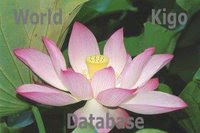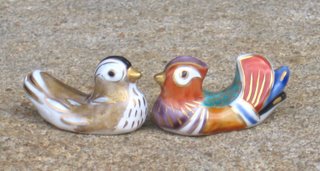. Dragon Shrines .
:::::::::::::::::::::::::::::::::::::::::::::::::::::::::::::::::::::::::::::::::::::::::::::::::::::
autumn deepens -
this internet pilgrim
still on the road
:::::::::::::::::::::::::::::::::::::::::::::::::::::::::::::::::::::::::::::::::::::::::::::::::::::
Temples with the "dragon" in their name
The Dragon in temple names refers to the Chinese dragon bringing clouds.
It also refers to local legends about snakes and dragons in a pond.
Another source is the posthumous Buddhist name of the temple founder, which often contains "Dragon".
There are usually more than one temple with the same Dragon name.

under construction
:::::::::::::::::::::::::::::::::::::::::::::::::::::::::::::::::::::::::::::::::::::::::::::::::::::
. Bonten 梵天 Baramonten, Brahma .
. Ryuugeji 竜花寺 Ryuge-Ji "Dragon Flower Temple" .
2085 Muramatsu, Shimizu Ward, Shizuoka
静岡市清水区村松2085
and
竜海寺 Ryukai-Ji, 竜心寺 Ryushin-Ji, 竜天寺 Ryuten-Ji and 竜王寺 RyuO-Ji.
:::::::::::::::::::::::::::::::::::::::::::::::::::::::::::::::::::::::::::::::::::::::::::::::::::::
To be checked
Ryuufkukuji 龍福寺 Ryufuku-Ji "Dragon Luck Temple"
Ryuuganji 龍岩寺 Ryugan-Ji "Dragon Rock Temple"
. Ryuugeji 龍華寺 Ryuge-Ji "Dragon Lotus Temple" .
- GE can also be the Bodhi tree of Maitreya
Ryuujooji 滝上寺 Ryujo-Ji "Dragon Above Temple"
Ryuujooji 龍城寺 Ryujo-Ji "Dragon Castle Temple"
Ryuujuuji 竜樹寺 Ryuju-Ji "Dragon Tree Temple"
. The translator Nagarjuna was called Ryuju, Dragon Tree
Ryuukooji 龍湖寺 Ryuko-Ji "Dragon Lake Temple"
... Ryuusuiji 龍水寺 Ryusui-Ji "Dragon Water Temple"
Ryuukooji 龍興寺 Ryuko-Ji "Dragon Prospering Temple"
Ryuumonji 竜門寺 Ryumon-Ji "Dragon Gate Temple"
Ryuuonji 竜穏寺 / 龍穏寺 Ryuon-Ji "Dragon Calm Temple" (H)
Ryuushooji Ryusho-Ji
龍昌寺
龍翔寺
龍照寺
龍勝寺 Ryusho Nagarjuna Temple
Ryuutaku-ji 龍沢寺 Ryutaku-ji"Dragon Swamp Temple"
Ryuutenji 龍天寺 Ryuten-Ji "Dragon Heaven Temple"
Ryuutooji 龍頭寺 Ryuto-Ji "Dragon Head Temple"
Ryuuunji, Ryoounji 龍雲寺 Ryuun-Ji, Ryoun-Ji "Dragon Cloud Temple"
Ryuuzooji龍蔵寺 Ryuzo-Ji "Dragon Store Temple"
Shinryuuji 信竜寺 Shinryu-Ji “Trusty Dragon Temple”
Shooryuuji 昌竜寺 Shoryu-Ji“Flourishing Dragon Temple”
Sooryuu-ji 蒼龍寺 Soryu-Ji“Blue Dragon Temple”
:::::::::::::::::::::::::::::::::::::::::::::::::::::::::::::::::::::::::::::::::::::::::::::::::::::
:::::::::::::::::::::::::::::::::::::::::::::::::::::::::::::::::::::::::::::::::::::::::::::::::::::
Anryuuji 安竜寺 Anryu-Ji “Peaceful Dragon Temple”
Banryuuji 蟠竜寺 Banryu-Ji“Coiling Dragon Temple”
.................................................................................
Dannoo Hoorinji 檀王法林寺 Danno Horin-Ji
Kyoto
In the compound of this temple is a
Ryuujindoo 龍神堂 Ryujin Do Hall Dragon Hall
with a statue of

Kamogawa Ryuujin 加茂川龍神
Kamogawa Dragon Deity
with a special ritual on June 1 (or the first sunday in June) to pray for safe rain and a good harvest.
ryuujin hooyoo 龍神法要
Prayers are made to this deity in times of drought or too much rain.
The statue is gentle like a Kannon statue, with a fearful dragon with long arms on her head.
It was made in 1666 by order of Emperor Reigen Tenno 霊元天皇, after the river Kamogawa caused a great flooding.
The Deity represents one of the Eight Great Dragon Kings 八大龍王 in its Buddhist version. Later Buddhist versions of the Dragon King Deities became more popular.
The temple was founded by Hoosei Rooryoo-e 望西楼了恵 (1243 - 1322) under the auspicious of Emperor Kameyama 亀山天皇
source : www.dannoh.com
京都市左京区川端通三条上る法林寺門前町36
.................................................................................
. Gyokuryuuji 玉竜寺 Gyokuryu-Ji
"Pearl Dragon Temple" .
. Honryuuji 本竜寺 Honryu-Ji“Original Dragon Temple” .
. Hooryuuji 宝竜寺 Horyu-Ji “Precious Dragon Temple” .
- - - - - 法龍寺 Horyu-Ji "Law Dragon Temple"
. Jyooryuuji 浄竜寺 Joryu-Ji “Pure Dragon Temple” .
. Kairyuuooji 海龍王寺 Kairyuo-Ji
"Sea Dragon King Temple" .
. Keiryuuji 慶龍寺 Keiryu-Ji“Celebratory Dragon Temple” .
Keiryuuin 慶龍院 Keiryu-In
. Kinryuuji 金龍寺 Kinryu-ji - Golden Dragon Temple .
Goldener Drachentempel
The Golden Dragon (kinryuu son 金龍尊) is often mentioned in the Suvarna- prabhasa-sutra "Golden Light Sutra" (Goldglanz Sutra).
. Kooryuuji 光竜寺 Koryu-Ji“Light Dragon Temple”
Kooryuuji 興竜寺 Koryu-Ji“Rising Dragon Temple”
Kooryuuji 高竜寺 Koryu-Ji“Tall Dragon Temple" .
. Manryuuji 万竜寺 Manryu-Ji “Myriad Dragons Temple” .
萬龍寺
. Ooryuuji 黄竜寺 Oryu-Ji“Yellow Dragon Temple” .
. Ryooan-ji 龍安寺 /竜安寺 Ryoan-Ji, Royanji
"Dragon Peace Temple" .
. Ryuudooji 龍洞寺 Ryudo-Ji "Dragon Cave Temple" .
Ryuu no makura ishi 龍の枕石 stone pillow for the dragon
Dragon's pillow rock
.................................................................................
Ryuugaiji 龍蓋寺 Ryugai-Ji "Dragon Lid Temple"
(gai has various symbolic meanings in Buddhism)
better known as Okadera 岡寺 Hill Temple, in Akusa, Nara.
It was founded by Priest Gien (義淵) during the 7th century, and is the 7th temple on the Kansai Kannon Pilgrimage.
The statue of Gien is one of the national treasures of Japan.

During the time of Emperor Tenchi 天智天皇 Gien made an exorcism of a local vicious dragon, banned him in the pond and put a lid on it to keep it safe there.
Drachendeckel-Tempel.
- quote -
Is this temple the inspiration behind Dragon Ball Z?
Visit Okadera Temple and the monks will likely say to you, “This is the Dragon Ball Z Temple. It is here where wishes can be granted.” Come back at them with a quip about the anime and the 7 dragon balls (they’re waiting for it) and laughs are bound to follow as is the story of Okadera.

- - - - - The Temple and its Legends
According to temple legend a Buddhist monk named Gaien confronted a dragon that was marauding what is now Asuka Village. Gaien defeated the dragon and imprisoned it under the floor of a small pond. He placed a large rock, a “ryugai” or dragon lid, in the pond to prevent the dragon from escaping. Thusly Ryugaiji Temple, Okadera’s formal name, was founded in 663. Supposedly, the dragon’s heart was “reformed” by its fight with Gaien and it became one of the temple’s deities. Japanese dragons have a ball near the end of their tail that contains magic. It is said that by the power of this dragon ball wishes can be granted.
Dragon balls, Okadera’s most powerful variety of amulet, can be purchased (¥600ea.) but they are not of the 1 through 7 star variety. Known as “ryutama” 龍玉 (dragon balls) or negaitama (wishball), Okadera’s dragon balls are made of wood, inscribed with Okadera’s kanji characters, and contain a small paper scroll. Write your wish on the scroll and hang your dragon ball on one of the designated trees in the temple’s garden.
Besides dragon ponds and dragon balls, Okadera is home to the Nyoirai Kannon Bosatsu wish granting seated Buddha statue, the oldest ceramic Buddha in Japan at 1200 years old, a 3-story pagoda overlooking the central Asuka Village area, several beautiful and historic buildings, and a garden of maple and deciduous trees that become riotously colorful in the fall.
- source : thesarusawablog.com -
.................................................................................
. Ryuuginji 龍吟寺 Ryugin-Ji -Singing Dragon Temple .
..... Ryoogin An 龍吟庵 Kyoto
ryuugin koshoo 龍吟虎嘯 Dragon and Tiger lore
. Ryuukooji 龍口寺 Ryuko-Ji - Dragon Mouth Temple .
Fujizawa. Saint Nichiren and
Tatsu no Kuchi 竜の口 the "Mouth of the Dragon"
. Ryuukooji 龍光寺 Ryuko-Ji - Temple of Dragon's Ray .
Ryuukooin 龍光院 Ryuko-In
Ryookooin 龍光院 Ryoko-In
. . . . . and
Ryuutokuji 竜得寺 Ryutoku-Ji "Temple of Great Dragon Quality"
. Ryuukoo Fudoo 龍光不動尊 Ryuko Fudo Son . - Ginza, Tokyo
. Ryuuoo in 龍王院 Ryuo-In - Dragon God Hall .
at temple Kinpusenji 金峯山寺, Yoshino, Nara
. Ryuuooji 竜王寺 Ryuo-Ji "Dragon King Temple" .
. Ryuusenji 龍泉寺 Ryusen-Ji "Dragon Fountain Temple" .
Aichi, Nagoya 愛知県名古屋市守山区
.................................................................................
. Seiryuujii, Shooryuuji 青竜寺 Seiryu-Ji .
Azure Dragon of the East
. Senryuuji 泉竜寺 Senryu-Ji“Fountain Dragon Temple” .
:::::::::::::::::::::::::::::::::::::::::::::::::::::::::::::::::::::::::::::::::::::::::::::::::::::
Shooryuuji 正龍寺 Shoryu-Ji - Real Dragon Temple
正龍寺 -鹿児島県指宿市山川
正龍寺 -埼玉県:大里郡/寄居町/藤田村
正竜寺愛知県:幡豆郡/吉良町/小山田村
Shooryuuji mura 正竜寺村- 山形県:酒田市
village named Shoryu-Ji
.................................................................................
. Tenryuuji 天龍寺 Tenryu-Ji "Heavenly Dragon Temple" .
. . . . . Tenryu-In 天龍院
.................................................................................
Unryuuji 雲龍寺 Unryu-Ji "Cloud Dragon Temple"
The dragon in the clouds is a metaphor for the enlightened mind, reaching out and above of the samsara world.
Saṅsāra or Saṃsāra (Sanskrit: संसार), (in Tibetan called "khorwa"), literally meaning "continuous flow",
is the cycle of birth, life, death, rebirth or reincarnation within Hinduism, Buddhism, Bön, Jainism, Sikhism, and other Indian religions.
© More in the WIKIPEDIA !
Temples of this name
群馬県館林市 Gunma
兵庫県三木市 Hyogo

:::::::::::::::::::::::::::::::::::::::::::::::::::::::::::::::::::::::::::::::::::::::::::::::::::::
. Zenryuuji 善竜寺 Zenryu-Ji “Good Dragon Temple” .
. Zenryuuji 全竜寺 Zenryu-Ji “Whole Dragon Temple” .
. Zuiryuu-ji 瑞龍寺 Zuiryu-Ji - Zuiryo-Ji
“Auspicious Dragon Temple” .
:::::::::::::::::::::::::::::::::::::::::::::::::::::::::::::::::::::::::::::::::::::::::::::::::::::
:::::::::::::::::::::::::::::::::::::::::::::::::::::::::::::::::::::::::::::::::::::::::::::::::::::
. Henro Pilgrim Temples in Shikoku .
12 Temple of the Burning Mountai 焼山寺 Shozan-Ji
21 Temple of the Great Dragon 太龍寺 Tairyu-Ji / Dairyu-Ji
36 Temple of the Green Dragon 青龍寺 Shoryu-Ji
41 Temple of Dragon's Ray 龍光寺 Ryuko-Ji
:::::::::::::::::::::::::::::::::::::::::::::::::::::::::::::::::::::::::::::::::::::::::::::::::::::
. Wakasa Bay 若狭湾 .
Wakasa Pilgrimage to 33 Kannon Temples
若狭の三十三観音
3 Dragon Temples
第03番 金照山 Ryuukeiin 龍渓院 Ryukei-In
Dragon Gorge Hall
福井県三方郡美浜町丹生 47-1
第11番 大龍山 永源寺 Dairyuuzan
福井県小浜市田烏 37-3
第17番 龍雲山 神通寺 Ryuuunzan
福井県小浜市遠敷 56-2
http://www.kimura-product.co.jp/kannon7/wakasa33/wakasa.htm
There are more Ryukei-In in Japan.
:::::::::::::::::::::::::::::::::::::::::::::::::::::::::::::::::::::::::::::::::::::::::::::::::::::
In Tokyo
Kinryuuzan Akakusadera 金竜山浅草寺
Kinryuzan - Golden Dragon Mountain
. Asakusa Kannon 浅草観音 .
Kinryuuzan no oidashi
きんりゅうざん の 追出(おいだ)し
to be driven out because of Kinryuzan
. . . . . and
Kinryuuzan no koi shirazu
きんりゅうざん の 恋(こい)知(し)らず
Kinryuzan does not know about love
When the temple bell rang in the morning, the lovers from the Asakusa pleasure quarters of nearby Yoshiwara had to part and the men had to go home.
:::::::::::::::::::::::::::::::::::::::::::::::::::::::::::::::::::::::::::::::::::::::::::::::::::::
quote
Dragon lore
is traditionally associated with Buddhist temples. Myths about dragons living in ponds and lakes near temples are widespread. De Visser (1913:181-184) lists accounts for Shitennō-ji in Osaka, Gogen Temple in Hakone, Kanagawa, and the shrine on Mount Haku where the Genpei Jōsuiki records that a Zen priest saw a 9-headed dragon transform into the goddess Kannon. In the present day, the Lake Saiko Dragon Shrine at Fujiyoshida, Yamanashi has an annual festival and fireworks show.
Temple names, like Japanese toponyms, frequently involve dragons.
For instance, the Rinzai sect has Tenryū-ji 天龍寺 "Heavenly Dragon Temple", Ryūtaku-ji 龍沢寺 "Dragon Swamp Temple", Ryōan-ji 竜安寺 "Dragon Peace Temple".
According to legend (de Visser 1913:180), when the Hōkō-ji 法興寺 or Asuka-dera 飛鳥寺 Buddhist temple was dedicated at Nara in 596, "a purple cloud descended from the sky and covered the pagoda as well as the Buddha hall; then the cloud became five-coloured and assumed the shape of a dragon or phoenix".
The Kinryū-no-Mai "Golden Dragon Dance" is an annual Japanese dragon dance performed at Sensō-ji, a Buddhist temple in Asakusa. The dragon dancers twist and turn within the temple grounds and outside on the streets. According to legend, the Sensō Temple was founded in 628 after two fishermen found a gold statuette of Kannon in the Sumida River, at which time golden dragons purportedly ascended into heaven. The Golden Dragon Dance celebrates the temple founding and allegedly provides good fortune and prosperity.
© More in the WIKIPEDIA !
:::::::::::::::::::::::::::::::::::::::::::::::::::::::::::::::::::::::::::::::::::::::::::::::::::::
. Ryuu Jinja 龍神社 Ryu Jinja "Dragon Shrines"
:::::::::::::::::::::::::::::::::::::::::::::::::::::::::::::::::::::::::::::::::::::::::::::::::::::
There are many more temples in Japan which are related to the Dragon, but do not carry its character in the name.
Mangan-Ji 満願寺 Kyoto - Tatsu no Myooken 辰の妙見
. Myooken Bosatsu 妙見菩薩 Myoken .
and the Star Shrines of Japan
Hokushin Myoken Bosatsu 北辰妙見菩薩
Hokushin Bosatsu 北辰菩薩 Sk: Sudrsti
Hokushin Jinja 北辰神社 -
..... "Northern Dragon Shrine" Pole Star Shrine
- Reference : 北辰神社 in Japan
:::::::::::::::::::::::::::::::::::::::::::::::::::::::::::::::::::::::::::::::::::::::::::::::::::::
Saitatsuji 西辰寺 "West Zodiac Dragon Temple"
Hokkaido
:::::::::::::::::::::::::::::::::::::::::::::::::::::::::::::::::::::::::::::::::::::::::::::::::::::
. Omamori 龍神札 Dragon God Amulets .
. Dragon Shrines .
[ . BACK to WORLDKIGO . TOP . ]
[ . BACK to DARUMA MUSEUM TOP . ]
- dragontemples -
:::::::::::::::::::::::::::::::::::::::::::::::::::::::::::::::::::::::::::::::::::::::::::::::::::::

































